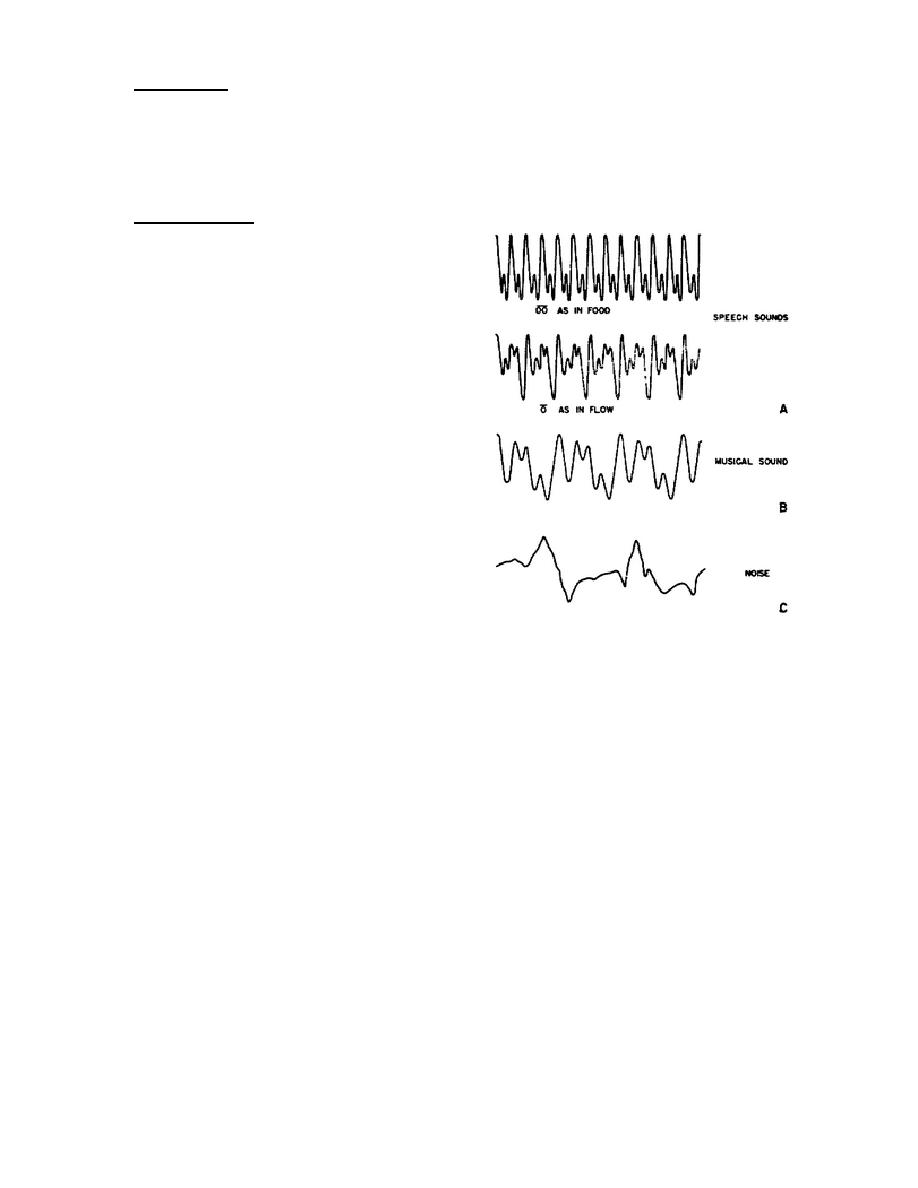
b. Voice Sounds. Voice sounds are complex sounds and contain different sets of harmonics which helps us to
recognize the voices of different people and makes the voice expressive of feelings such as gladness, sorrow and anger.
Harmonics are important in telephony, because if the telephone system suppresses or distorts the voice harmonics it
makes the transmitting voice less intelligible. Basic voice sounds occur in the variation of the five basic vowels (a, e, i, o,
u) and the consonants. This difference in vowel sounds can be seen in a waveform. Study the waveforms in figure 5 and
note the difference in them.
c. Musical Sounds.
There are
different harmonics contained in the sound
waves produced by different musical
instruments playing the same note. These
enable the listener to recognize one instrument
from another in the same way harmonics in
voice produced sounds identify the voice.
Middle C struck on a piano is distinguished
easily from the same note played on a violin. A
musical notes richness in harmonics makes it
pleasing to the ear. Chords are pleasing
because all the harmonics of the individual
notes blend. The waveform of a musical note is
illustrated in figure 5B.
FIGURE 5. Waveform of Speech, Music,
and Noise
15



 Previous Page
Previous Page
